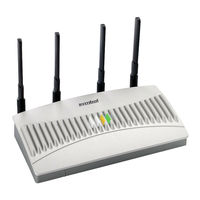Motorola AP-51 Series Access Point Manuals
Manuals and User Guides for Motorola AP-51 Series Access Point. We have 2 Motorola AP-51 Series Access Point manuals available for free PDF download: Product Reference Manual
Motorola AP-51 Series Product Reference Manual (724 pages)
Brand: Motorola
|
Category: Wireless Access Point
|
Size: 7 MB
Table of Contents
-
-
New Features20
-
Adaptive AP23
-
QBSS Support24
-
VLAN Support33
-
DHCP Support37
-
-
-
Precautions50
-
Requirements53
-
-
-
-
-
-
-
-
-
Network Commands369
-
System Commands503
-
-
-
-
Licensing658
-
Switch Discovery658
-
-
-
-
Country Codes689
-
-
Index
717
Advertisement
Motorola AP-51 Series Product Reference Manual (698 pages)
Brand: Motorola
|
Category: Wireless Access Point
|
Size: 6 MB
Table of Contents
-
-
New Features18
-
VLAN Support28
-
DHCP Support32
-
Dynamic DNS36
-
-
-
Precautions46
-
Requirements49
-
-
-
-
-
-
-
-
Network Commands345
-
System Commands476
-
-
-
-
Licensing632
-
Switch Discovery632
-
-
-
-
Country Codes663
-
-
Index
691

